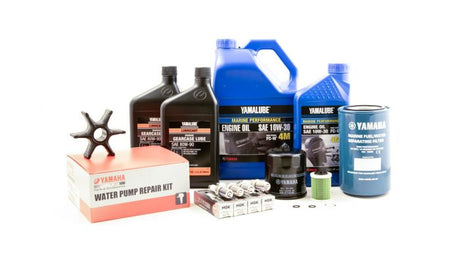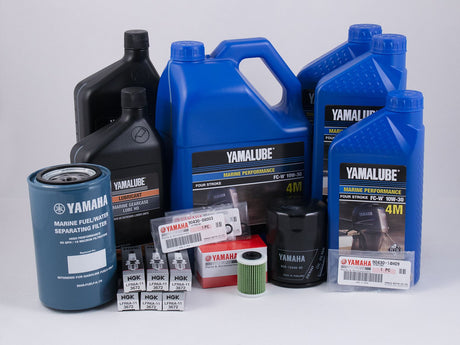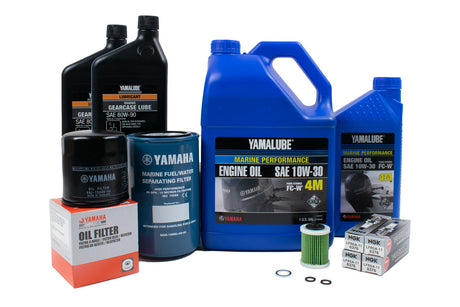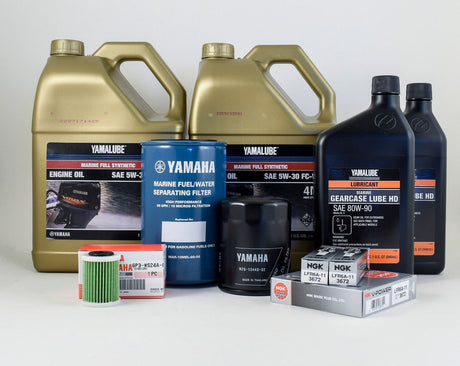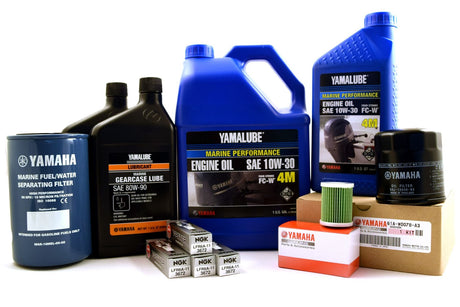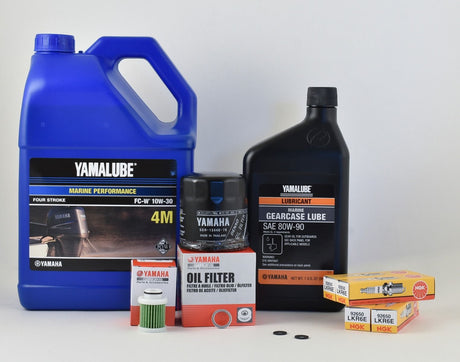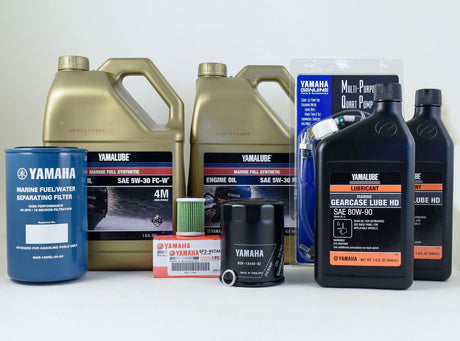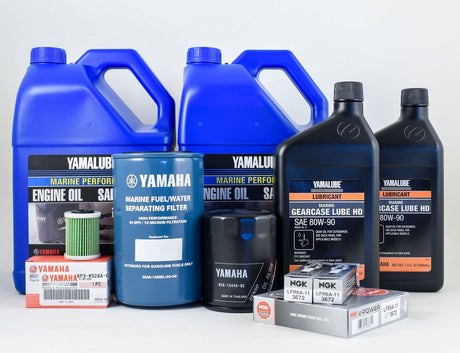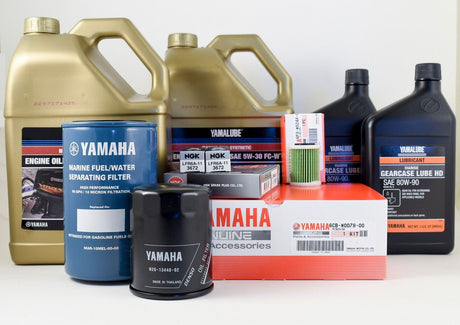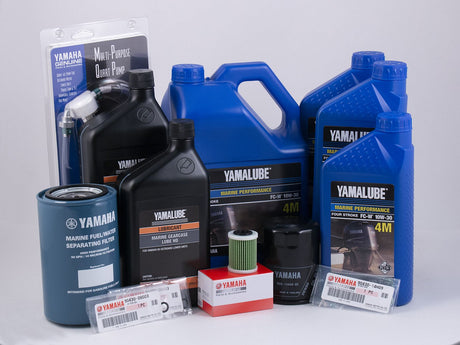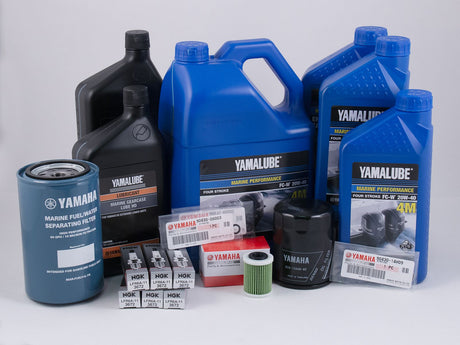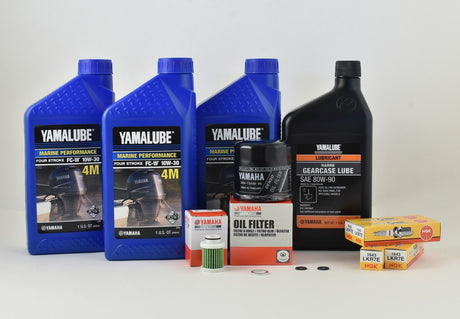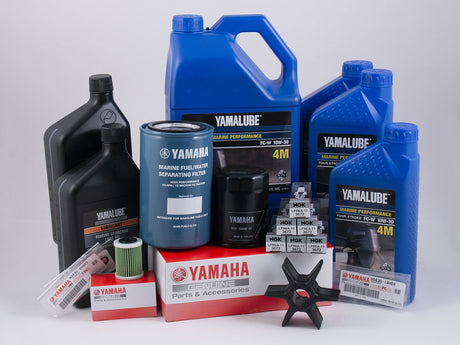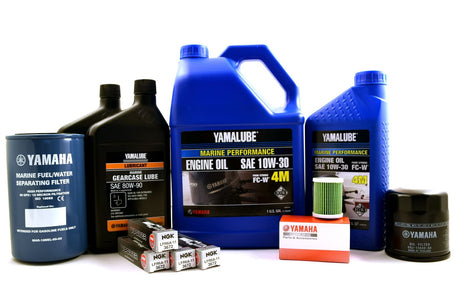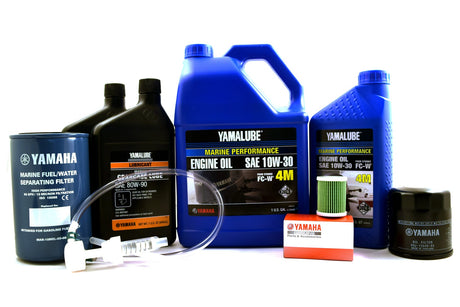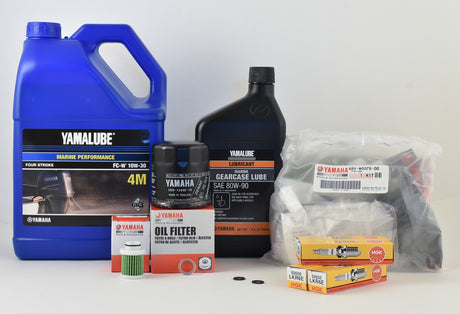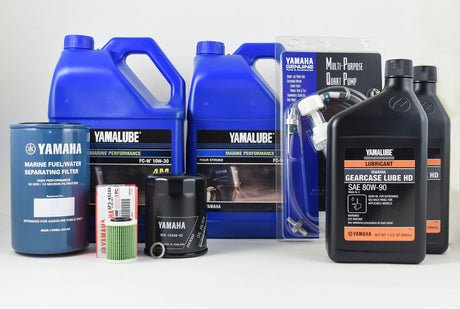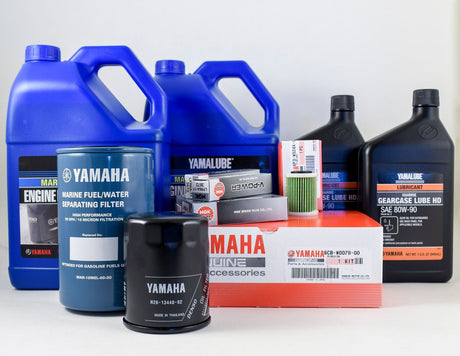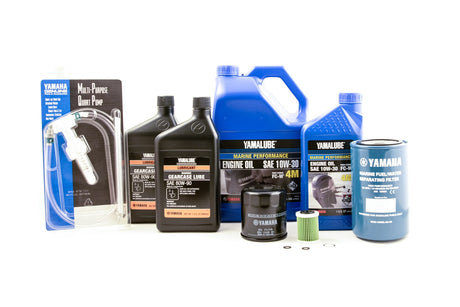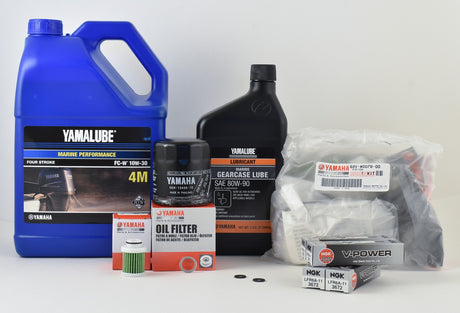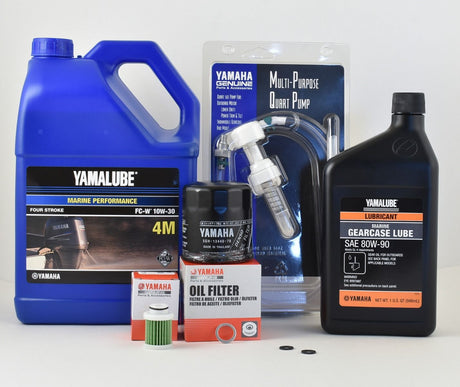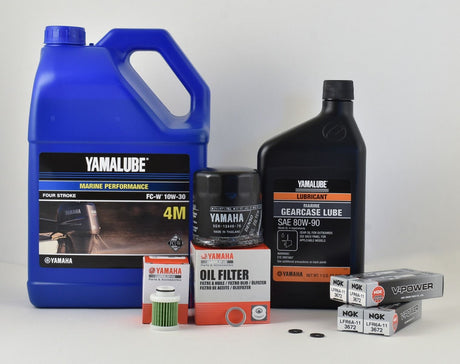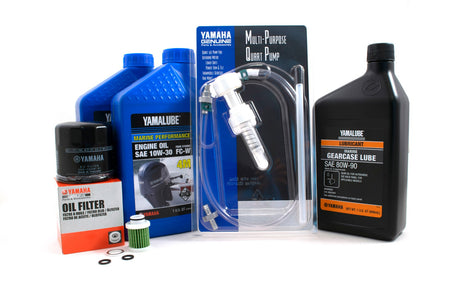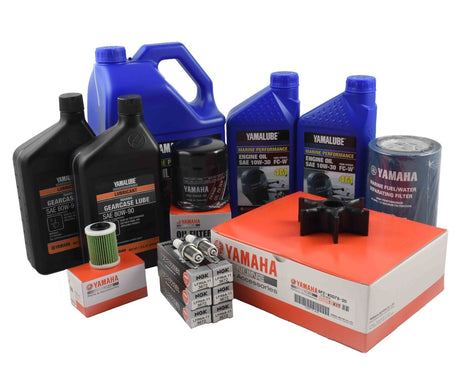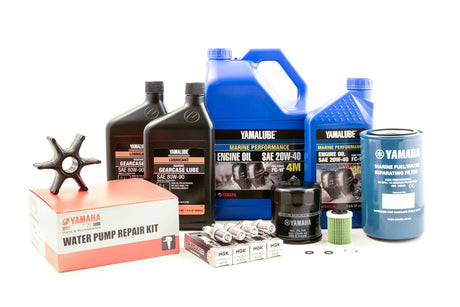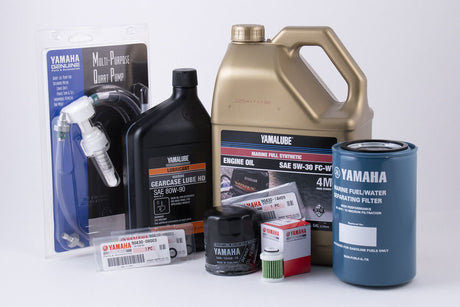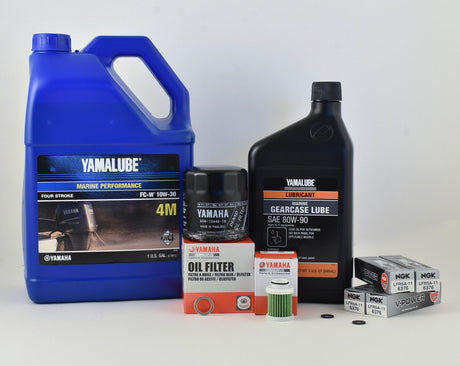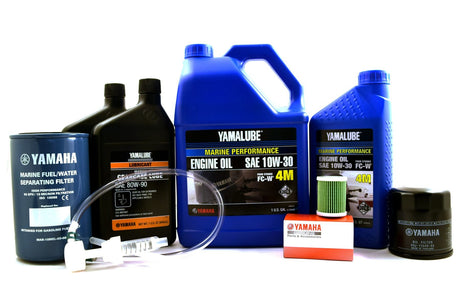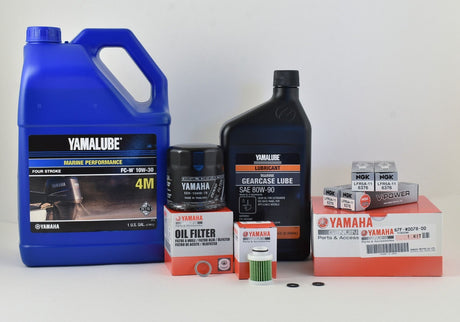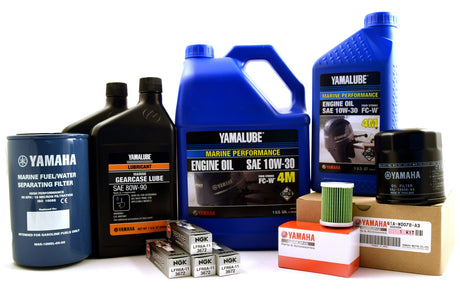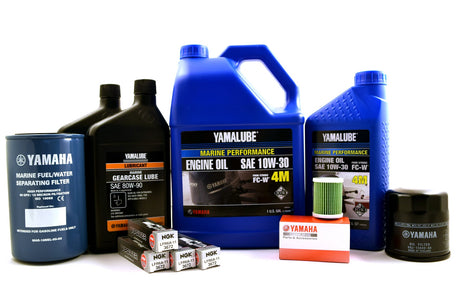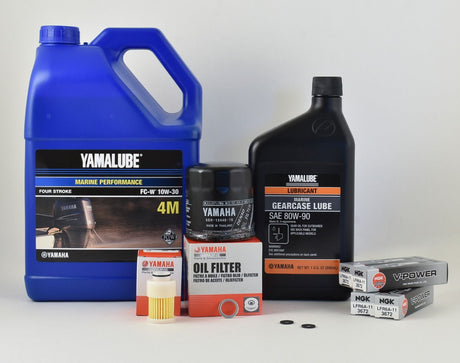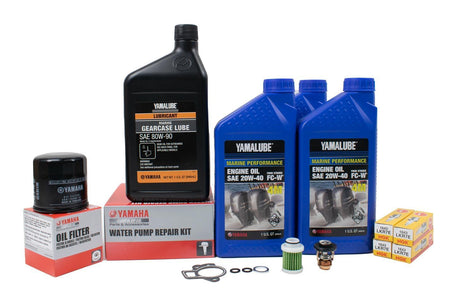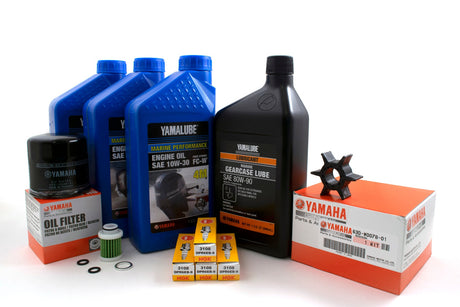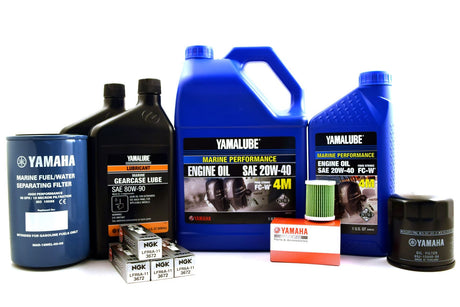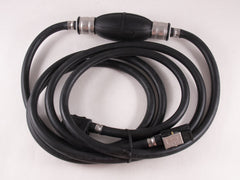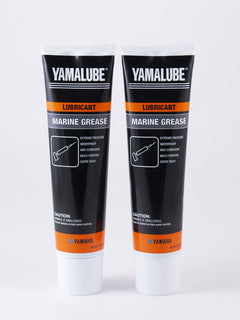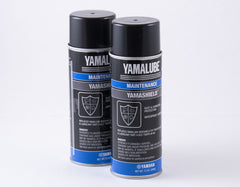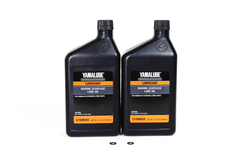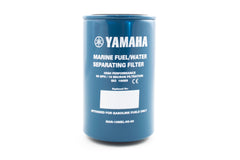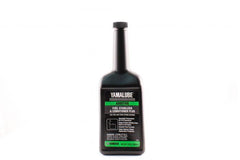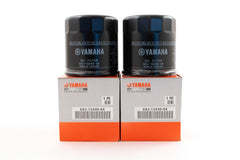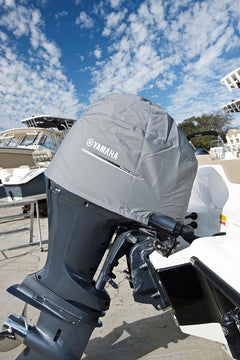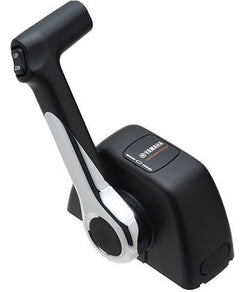Yamaha
$235.08 USDUnit price /UnavailableYamaha
Yamaha 100 Hour Service Maintenance Kit - Yamalube 10W-30 - F225 F250 F300 4.2L V6 - All Models
$201.88 USDUnit price /UnavailableYamaha
Yamaha 100 Hour Service Maintenance Kit - Yamalube 10W-30 - F150 - F150A - F150B - 2006-Current
$170.94 USDUnit price /Unavailable-
 Shop Now
Shop NowYamaha Spring Essentials
Yamaha
Yamaha 100 Hour Service Maintenance Kit - Yamalube 5W-30 - VF200 VF225 VF250 SHO - All Models
$251.34 USDUnit price /UnavailableYamaha
Yamaha 100 Hour Service Maintenance Kit with Cooling - Yamalube 10W-30 - F175 F200 2.8L - All Models
$232.20 USDUnit price /UnavailableYamaha
Yamaha 100 Hour Service Maintenance Kit - Yamalube 10W-30 - F115 -2014-Current
$121.37 USDUnit price /UnavailableYamaha
Yamaha 20 Hour Service Maintenance Kit - Yamalube 5W-30 - VF200 VF225 VF250 SHO - All Models
$217.95 USDUnit price /UnavailableYamaha
Yamaha 100 Hour Service Maintenance Kit - Yamalube 10W-30 - VF200 VF225 VF250 SHO - All Models
$205.90 USDUnit price /UnavailableYamaha
$375.13 USDUnit price /UnavailableYamaha
Yamaha 20 Hour Service Maintenance Kit - Yamalube 10W-30 - F225 F250 F300 4.2L V6 - All Models
$168.49 USDUnit price /UnavailableYamaha
Yamaha 100 Hour Service Maintenance Kit - Yamalube 20W-40 - F225 F250 F300 4.2L V6 - All Models
$205.46 USDUnit price /UnavailableYamaha
Yamaha 100 Hour Service Maintenance Kit - Yamalube 10W-30 - F70 - All Models
$113.79 USDUnit price /UnavailableYamaha
$438.94 USDUnit price /UnavailableYamaha
Yamaha 100 Hour Service Maintenance Kit - Yamalube 10W-30 - F175 F200 2.8L - All Models
$168.06 USDUnit price /UnavailableYamaha
Yamaha 20 Hour Service Maintenance Kit - Yamalube 10W-30 - VF150 VF175 SHO
$149.13 USDUnit price /UnavailableYamaha
$214.25 USDUnit price /UnavailableYamaha
Yamaha 20 Hour Service Maintenance Kit - Yamalube 10W-30 - VF200 VF225 VF250 SHO - All Models
$172.51 USDUnit price /UnavailableYamaha
$329.69 USDUnit price /UnavailableYamaha
Yamaha 20 Hour Service Maintenance Kit - Yamalube 10W-30 - F150 - 2006-Current
$149.13 USDUnit price /UnavailableYamaha
$205.45 USDUnit price /UnavailableYamaha
Yamaha 20 Hour Service Maintenance Kit - Yamalube 10W-30 - F115 - 2006-Current
$93.64 USDUnit price /UnavailableYamaha
Yamaha 100 Hour Service Maintenance Kit - Yamalube 10W-30 - F115 - 2006-2014
$112.57 USDUnit price /UnavailableYamaha
Yamaha 20 Hour Service Maintenance Kit - Yamalube 10W-30 - F25C - 2016-Current
$79.90 USDUnit price /UnavailableYamaha
Yamaha 100 Hour Service Maintenance Kit with Cooling - Yamalube 10W-30 - F250 3.3L V6 - 2006-Current
$301.81 USDUnit price /UnavailableYamaha
$237.32 USDUnit price /UnavailableYamaha
Yamaha SHO 20 Hour Service Maintenance Kit with HD Gear Lube - Yamalube 5W-30 Synthetic - VF115
$139.43 USDUnit price /UnavailableYamaha
Yamaha 100 Hour Service Maintenance Kit - Yamalube 10W-30 - F90 - 2006-2017(F90A)
$115.45 USDUnit price /UnavailableYamaha
Yamaha 20 Hour Service Maintenance Kit - Yamalube 10W-30 - F175 F200 2.8L - All Models
$149.13 USDUnit price /UnavailableYamaha
Yamaha 100 Hour Service Maintenance Kit with Cooling - Yamalube 10W-30 - F90 - 2006-2017(F90A)
$175.25 USDUnit price /UnavailableYamaha
Yamaha 100 Hour Service Maintenance Kit with Cooling - Yamalube 10W-30 - VF150 VF175 SHO
$232.20 USDUnit price /UnavailableYamaha
Yamaha 100 Hour Service Maintenance Kit - Yamalube 10W-30 - VF150 VF175 SHO
$168.06 USDUnit price /UnavailableYamaha
Yamaha 100 Hour Service Maintenance Kit - Yamalube 10W-30 - F115- 2000-2005
$108.53 USDUnit price /UnavailableYamaha
Yamaha 300 Hour Service Maintenance Kit - Yamalube 10W-30 - F90 - 2006-2017 (F90 & F90A)
$212.59 USDUnit price /UnavailableYamaha
Yamaha 100 Hour Service Maintenance Kit With Cooling- Yamalube 10W-30 - F50 - 2006 - Current
$125.79 USDUnit price /UnavailableYamaha
Yamaha 100 Hour Service Maintenance Kit - Yamalube 20W-40 - F175 F200 2.8L - All Models
$170.30 USDUnit price /Unavailable
Yamaha 20-Hour & 100-Hour Service Maintenance Kits
YamahaOnlineParts.com is thrilled to present genuine Yamaha service kits for nearly all Yamaha outboard models. These 20-hour and 100-hour service maintenance kits make it easy to get the right oil filters, drain gaskets, spark plugs, lubricants, water pump parts, and other items in one convenient bundle, eliminating the need to guess which components are required.
To make your Yamaha outboard engine maintenance easier, we have compiled a range of useful resources, consisting of the following:
- Guide to Yamaha Outboard Fuel Filters
- Guide to Yamaha Outboard Fuel Filters
- Will DIY Maintenance and Repairs Void Your Yamaha Outboard Warranty?
Our shop offers a comprehensive inventory of Yamaha outboard components and tools to assist in the maintenance of your Yamaha outboard motor. This includes:
- Yamaha Outboard Motor Maintenance Kits - F25 & T25
- Yamaha Outboard Motor Maintenance Kits - F30
- Yamaha Outboard Motor Maintenance Kits - F40
- Yamaha Outboard Motor Maintenance Kits - F50 & T50
- Yamaha Outboard Motor Maintenance Kits - F60 & T60
- Yamaha Outboard Motor Maintenance Kits - F70
- Yamaha Outboard Motor Maintenance Kits - F90
- Yamaha Outboard Motor Maintenance Kits - F115
- Yamaha Outboard Motor Maintenance Kits - VF115 SHO
- Yamaha Outboard Motor Maintenance Kits - F150
- Yamaha Outboard Motor Maintenance Kits - VF150 & VF175
Yamaha Outboard Service Kits FAQ
How do you grease a Yamaha outboard motor?
Regular lubrication is a critical factor in preserving the performance of your Yamaha outboard motor. A grease gun is a necessary tool for this purpose. To use it, you put a tube of grease into the gun and utilize the trigger-operated plunger to slowly release the grease into the grease points.
Metal components known as grease points are installed on outboard motors to provide lubrication to the system when exposed to moderate or high levels of pressure. Working with these fittings is simple as you rarely need to remove parts of the engine to reach them. To find the grease points in your Yamaha outboard engine, consult your service manual and add grease to the sections labeled as "A".
How do you perform a Yamaha outboard leak-down test?
A leak down test for a Yamaha outboard is an uncomplicated inspection and can be included in your routine maintenance to be sure of its status. This test presents an evaluation of each of the cylinders in the Yamaha engine, in addition to the general state of the motor. This process is similar to a compression test, which requires squirting compressed air into each cylinder and using a pressure gauge to observe the amount of pressure dissipated over a short span of time.
Doing a leak down test for your Yamaha outboard motor requires you to carefully listen for any sound of leaking. Paying close attention to each cylinder and the nearby parts will help you identify where a potential leak may be.
- Step #1: Carefully remove the top cowling, Then, remove the ignition coil cover at the rear of the motor.
- Step #2: Remove the spark plugs.
- Step #3: Remove the flywheel cover from the top of the motor.
- Step #4: Mark the flywheel with a marker at 0°, 120°, and 240°. These positions indicate where you’ll rotate each pair of cylinders to the top dead center positions (see Step #11 and #12 below).
- Step #5: Rotate the crankshaft with your ratchet and socket to the top dead center for cylinder #1.
- Step #6: Adjust the regulator on the leak down tester to 0% to calibrate it for an accurate reading.
- Step #7: Connect the leak down tester by screwing into the spark plug port at cylinder #1. Next, connect the tester to the compressor and take a measurement. Be sure to firmly hold the crankshaft to prevent it from rotating.
- Step #8: Rotate the crankshaft 360° (one full rotation) to put cylinder #4 at top dead center.
- Step #9: Connect the leak down tester to cylinder #4. Then, take a measurement while holding the crankshaft to prevent it from rotating.
- Step #10: Set cylinder #3 to top dead center at the 120° mark. Next, repeat step #7 through Step #10 for cylinders #3 and #6.
- Step #11: Set cylinder #2 to top dead center at the 240° mark. Then, repeat step #7 through Step #10 for cylinders #2 and #5.
- Step #12: Replacement is the same as disassembly. Be sure to replace spark plugs in numbered order and apply anti-seizing compound on the threads for easy removal/replacement in the future. Also, firmly reattach the ignition wires for a solid connection.
What are common Yamaha F115 4-stroke outboard problems?
The Yamaha F115 has proven itself to be a dependable and powerful 4-stroke outboard motor that consistently satisfies customers. However, with continued use and exposure to the environment, Yamaha outboard parts can start to deteriorate and require regular upkeep to ensure it remains in working order and remains on the boat instead of in a repair shop.
Here are 5 of the most frequent issues that occur with Yamaha F115 4-stroke engines:
- Faulty Head Gasket - Over time, the head gasket of your Yamaha F115 is regularly exposed to a number of elements that reduce its integrity, such as salt water, heat, fuel, and other substances. Once a head gasket fails, water and other contaminants will enter your engine. When it comes to Yamaha 115 4 stroke problems, replacing the head gasket should be a priority every 4 years of service, or sooner if usage exceeds the average boater (50 hours per season, or 200 hours for 4 years).
- Bad Fuel Pump - Yamaha 115 4-stroke outboards often suffer from a malfunctioning fuel pump, which renders the engine completely inoperative until the issue is addressed. Thankfully, replacing or repairing a bad fuel pump is a straightforward and affordable process compared to many other motor repairs.
- Clogged Fuel Injectors - Over the course of time, the accumulation of carbon can obstruct fuel injectors, making it difficult for the fuel to be evenly dispersed. If the fuel injector becomes blocked with carbon, your outboard engine may start to misfire, vibrate unusually, and struggle when at idle or when the throttle is engaged. Cleaning the fuel injectors of your outboard engine with fuel injector cleaner stops the clogging and enables the Yamaha outboard motor to run at its peak.
- Clogged VST Filter - To avoid blockage, it is necessary to regularly switch out your Yamaha 115 4-stroke's VST filter. There are numerous kits available to help maintain and substitute the VST filter. If you neglect to do this service on a regular basis, you could be looking at a more taxing and costly repair on your Yamaha outboard motor.
Trim and Tilt Problems - Issues with the trim and tilt switch on a Yamaha F115 outboard motor can hinder your ability to make both minor and major alterations to the boat's performance. Fortunately, the problem can be solved by replacing the switch.
Why are there so many types of Yamaha outboard fuel filters?
The abundance of Yamaha outboard fuel filters can be easily explained by the varied sizes and forms of dirt. Not only can some dirt be seen with the naked eye, but it can also be composed of minute biological organisms that are still developing.
Particles of dirt can be found in various forms. Some may show up as a round ball, whereas others may be shaped like an arrow. Generally, round dirt is simpler to capture, but the arrow-shaped ones may manage to make their way through the first and second filters and become lodged in the third. When the arrow type of dust lays across the filtration material, it will partially block the air channels and make them smaller, thus trapping even tinier particles of dirt. This usually results in the filter becoming clogged. When the first filter is blocked, the suction power of the vacuum cleaner may draw the dirt through it and send it to the subsequent filter, and so on.
Poor quality fuel, water contamination, ethanol additives, inadequate fuel rotation, and microbial growth can all lead to clogged Yamaha fuel filters. Therefore, it is essential to replace all Yamaha fuel filters in accordance with the manufacturer's recommended maintenance schedule. To simplify the process, many of our Yamaha outboard service kits come with fuel filters included.
Certain Yamaha four-stroke outboard motors need to be outfitted with multiple fuel filters or screens in order to stop water and detritus from infiltrating the engine.
How do you perform a Yamaha outboard motor oil change?
Keeping up with the necessary upkeep on your Yamaha outboard will ensure it keeps running smoothly and dependably. Utilize one of our Yamaha outboard service kits to quickly and easily take care of an oil change for your Yamaha outboard motor.


